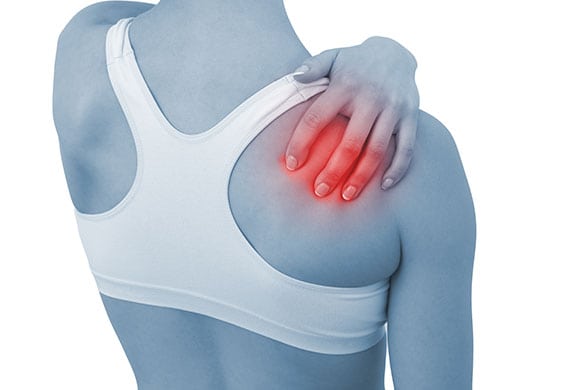
Learn more about Myofascial Pain Syndrome and how Los Angeles Pain Specialist can manage your symptoms.
Myofascial pain is a type of chronic pain affecting the connective tissue that covers the muscles. It is possible for the pain generator to be located in a different place on the body than where the pain is felt, known as referred pain.
- Pain can be limited to one muscle or affect entire group
- Referred pain can occur when an injury or strain creates a trigger point
CONTACT US TODAY
Causes of Myofascial Pain Syndrome
Myofascial pain syndrome occurs when the soft tissue of the muscles, tendons, or ligaments becomes inflamed as the result of injury, overuse, or excessive strain. Common causes of myofascial pain syndrome include general fatigue, repetitive motions, injury to the muscle fibers, or an extended period of inactivity.
Symptoms of Myofascial Pain Syndrome
Patients with myofascial pain syndrome typically experience muscle pain along with identifiable trigger points or tender areas. The trigger points produce the pain in response to stimuli, such as touch, activity, or an acute injury. There is also an association between myofascial pain syndrome and high levels of stress and anxiety. This may be because most people clench and tighten their muscles when under stress, which can lead to the development of trigger points. The chronic nature of myofascial pain syndrome can lead to depression and fatigue.


Diagnosing Myofascial Pain Syndrome
While lab and imaging tests may be used to rule out other possible causes of muscle pain, myofascial pain syndrome is typically diagnosed during a physical exam. During the exam, the doctor will apply gentle pressure to a tender area in an effort to elicit a response. For example, the pressure may cause certain muscles to tense or twitch.
Treating Myofascial Pain Syndrome
The treatment of myofascial pain syndrome typically involves a combination of therapies. Over-the-counter and prescription pain relievers, antidepressants, and sedatives may help relax the muscles, reduce pain, and improve sleep. Physical therapy may be used to strengthen muscles surrounding the trigger point. The physical therapist may also use a “stretch and spray” technique in which a numbing agent is sprayed on the affected muscle and trigger point as the muscle is gently stretched.
Massage therapy may provide temporary relief by relaxing tense muscles. Heat and ultrasound therapy can reduce muscle tension and increase circulation to the affected area to promote muscle healing. In some instances, a steroid or numbing agent may be injected directly into the trigger point to help break up the muscle tension.

